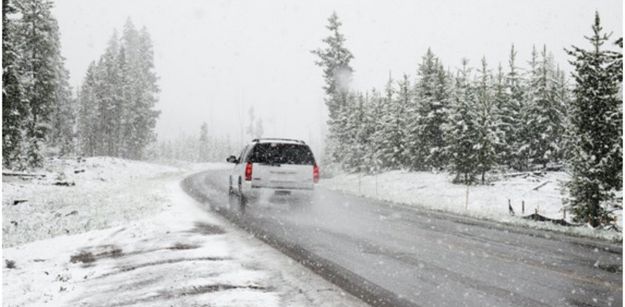Although for many people, winter is the most wonderful time of the year, it can also be the most frightening and dangerous if you have to travel somewhere by car. Whether you need to go to work, take your children to school, or travel for the holidays, winter weather conditions can easily make the roads a risky place to be.
For instance, according to statistics, an estimated 50,000 car accidents occur every year in Ontario due to slippery winter conditions. This high number simply shows how important it is to be prepared when hitting the road in winter in order to avoid getting into an accident and sustaining severe physical injuries.
Luckily, there are a few precautions you can take to stay safe when driving on snow or ice. From decreasing speed to installing winter tires, it is crucial to know how to navigate wintry road conditions properly to reduce the risk of crashes.
For further assistance, here are five useful tips for safely driving in winter.

Obtain car insurance
Although there are many tips and tricks on how to drive safely on icy roads, the best way to stay protected in winter is to obtain car insurance. The main purpose of auto insurance is to provide you with financial coverage in the event of accidents, including damages caused to your vehicle by severe weather conditions.
For example, investing in comprehensive car insurance coverage can help you pay to repair or replace your car if a falling icicle breaks your windshield or dents your hood. For more information, consult with an insurance broker to learn more about this coverage and its benefits.
Prepare your car for the weather
Another important tip you should follow is to prepare your vehicle for the weather. You should especially do this if you are planning on going on a winter holiday and you need to have a fully functioning car to be able to tackle the typical winter weather conditions.
Start by checking your ride’s electrical system, such as the battery and the brakes, and adjust them to ensure equal braking.
Additionally, make sure the heating and cooling system is working properly and that your windshield wipers function efficiently. If necessary, top up the washer container with an antifreeze fluid.
Check your tires
As the temperatures begin to drop in winter, so does the tire inflation pressure. So, before you hit the road, you should check your tires by filling each one to the recommended tire pressure for your car.
When inspecting your tires, make sure you do it when they are cold, or at least three hours after they have been driven on. Also, don’t forget to check for any damages and replace your tires if necessary before going on your trip.
Lastly, consider installing winter tires as they are designed to perform better on wet, snowy, and icy roads.
Watch out for black ice
A winter weather condition you may encounter during the colder months of the year is black ice. This is a glaze that forms on road surfaces mostly at night or early morning when the temperatures reach their lowest. It is highly transparent, making it almost impossible to see, especially when it is under a layer of snow.
Although the best way to avoid black ice is to refrain from driving in winter, there may be times when you will hit a patch of it while on the road. In this case, you should pay close attention to the road, steer gently in the direction you want to go, and don’t brake hard.
Make your car visible
Another important tip you should remember when driving in winter is to make your car visible. The best way to do so is to check your headlights and taillights and make sure they are working properly so other vehicles and passengers can see you during heavy winter storms.
For example, it may be helpful to upgrade your lights to LEDs as they will provide you with a wider beam of light. Although they dim over time, they produce less heat and will help you remain visible in a snowstorm.
Also, don’t forget to invest in high-quality wipers and washer fluid to keep your windshield clear at all times.

Final thoughts
Driving in winter can be risky, but with a few precautions in place, you can stay safe on snowy and icy roads. From preparing your vehicle for the weather and installing winter tires to driving slowly and paying close attention to the road, be sure to follow the tips from our post and learn how to navigate winter roads like a pro.